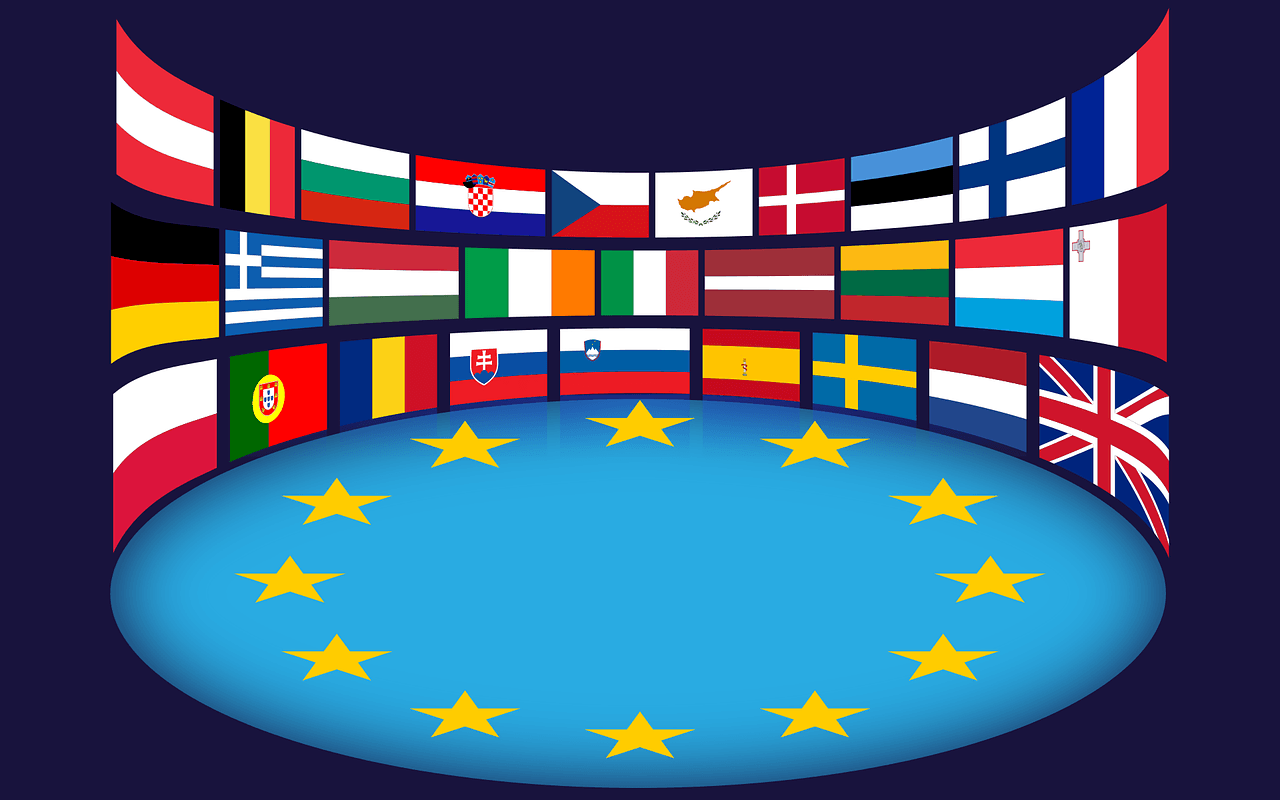Intrastat Registration - in the European Union
EU Intrastat
Information:
Intrastat is a data collection system used to develop statistics on the exchange of goods between European Union (EU) member states.
The introduction of the single market on 1 January 1993, and with it the abolition of customs formalities between EU countries, led to the loss of traditional sources of data on foreign trade. As a result, it was necessary to create a new data collection system – this is how Intrastat was created. This system was introduced by Council Regulation (EEC) No. 3330/91 of 7 November 1991 concerning the statistics of the trading of goods between Member States.
The Intrastat system is characterized by the following features:
data is collected directly from entities trading in goods in the EU, once a month;
the system is closely linked to the VAT mechanism for intra-Community trade, which ensures completeness and high quality of data statistical;
a threshold system is in place, which simplifies data reporting and reduces the administrative burden for entrepreneurs, especially the smallest ones.

Guide to Intra-EU Trade Statistics
Intrastat – a system for collecting data on trade in goods in the European Union
The system for collecting data on trade in goods between EU member states is called Intrastat. It was introduced in January 1993, in parallel with the creation of the single European market, when customs declarations were abandoned as a source of statistical data. In their place, a new mechanism was established, under which data is collected directly from companies registered in individual Member States.
Intrastat – the largest survey of companies in the EU
The Intrastat system is considered the largest survey of companies in the entire European Union. In 2015, it was estimated that around 3.7 million companies traded goods between Member States. Of these, only 13.1% – or around 485,000 companies – were required to report in the Intrastat system. From this group:
207,000 companies (43%) reported only imports,
129,000 (27%) reported only exports,
and 150,000 (31%) reported both trade directions.
From the very beginning of the system’s operation, it was clear that the obligation to submit Intrastat declarations was a significant burden for companies. Therefore, over the course of more than 20 years, the system was gradually modified and adapted. These changes did not violate the basic principles of the system’s operation, but were aimed at, among other things, exemption of the smallest companies from the reporting obligation, without significantly reducing the quality of the collected data.
Simplification of the Intrastat system
Raising exemption thresholds
One of the most commonly used simplification methods was raising exemption thresholds from the reporting obligation by reducing the minimum coverage threshold in the Intrastat regulations. This made it possible to limit the number of companies subject to reporting obligations. Coverage has fallen from the initial 99% of total trade value to 97% for exports and 93% for imports.
However, it should be remembered that any reduction in the coverage level entails the need to estimate a larger share of unreported data, leading to a trade-off between simplification and data quality.
In 2015, as many as 24 Member States collected data above the required thresholds for imports, and 19 countries for exports – which shows that many countries are committed to providing high-quality statistics.
Single-flow system
The current Intrastat system is based on collecting both exports and data-end=”2611″>imports in each Member State. In a one-way system, data would be collected from only one side (e.g. only exports), and import data would be obtained on the basis of so-called mirror data from the trading partner country.
Since there are fewer exporters than importers, collecting only export data could significantly reduce the administrative burden – many companies would have limited or completely eliminated their reporting obligations.
Such a model already works in practice in relations between the United States and Canada, where each country only collects import data and exchanges it, thus obtaining export statistics.
However, despite promising benefits, the one-way system is associated with risks:
loss of control over import statistics, which would be fully dependent on data provided by partner countries,
and the risk of asymmetry in trade data between EU countries, which could affect the accuracy of trade balances and indicators such as GDP.
Who is obliged to submit information?
Data sources for EU external trade
International trade in goods statistics reflect the value and quantity of goods exchanged between EU Member States (intra-EU trade) and between the EU and third countries (extra-EU trade). These data are the basic source of information on imports, exports and the trade balance of the entire EU, the euro zone and individual member states.
Data is published for each reporting country and its trading partners, broken down by product classifications – the most commonly used is the UN SITC (rev. 4) classification, which enables comparisons at a global level.
In the case of non-EU statistics, the EU is treated as a single economic entity – export data only covers goods leaving the common market, while import data covers goods imported from third countries. Statistics of individual EU countries, on the other hand, present trade with both EU and non-EU partners.
Data collection methodology
Trade values are recorded in accordance with international standards:
FOB (Free on Board) – for exports, i.e. the value of goods at the point of departure from a member state,
CIF (Cost, Insurance, Freight) – for imports, covering costs until the goods arrive in the country of destination.
Data for the EU comes mainly from the COMEXT database maintained by Eurostat, which contains both current and archived data – not only from the Member States, but also from many non-EU countries. COMEXT is updated on an ongoing basis, therefore the published data may differ from the versions available on the Eurostat website.
In addition, trade statistics with the largest non-EU partners (e.g. charts 14-18) are based on UNCTAD (UN) data. The share of world trade is calculated as the sum of the EU’s trade with third countries (source: Eurostat) and the international trade of non-EU countries (source: UNCTAD).
The importance and use of statistics
Foreign trade statistics are essential for:
economic policy makers – at EU, national and international level,
enterprises – for market analyses and expansion planning,
EU institutions – for trade negotiations, implementing anti-dumping policy and assessing the functioning of the single market.
EU Trade Policy
The European Union pursues a common trade policy. The European Commission represents all Member States in negotiating trade agreements and develops instruments regulating trade in goods, services, intellectual property and foreign investments. This policy is an exclusive competence of the EU – only EU institutions can conclude trade agreements on behalf of the entire Community.
Global context
World trade issues are regulated by the World Trade Organization (WTO), which has 166 members (as of August 2024). The European Commission represents the EU in the WTO and actively participates in multilateral negotiations such as the Doha Development Agenda (DDA).
INTRASTAT registration in the European Union
INTRASTAT registration in the EU
Why You Should Choose Us?
We have many years of experience with the company, we have been operating on the market for 12 years. We approach each client with extraordinary care.
We try to solve each client’s case individually.
Co Oferujemy?
We offer you a range of solutions related to online sales.
Thanks to our experience and conducting foreign sales, we were able to develop the services we offer.
Our Services include:
– sale of the system for e-commerce activities;
– VAT registration on European markets;
– Registration for INTRASTAT in France, Germany, Spain, Italy, the Czech Republic, Poland and Slovakia
Is there a de minimis limit for submissions?
INTRASTAT system has statistical thresholds, which function as de minimis limits – that is, they define the minimum level of goods turnover above which a company is required to submit INTRASTAT declarations.
Details:
INTRASTAT thresholds are established separately for imports and exports.
The thresholds are set by each EU Member State individually, but according to EU regulations, it must ensure a minimum level of statistical data coverage (currently: 97% for exports and 93% for imports).
Companies that do not exceed the annual thresholds are exempt from the obligation to submit INTRASTAT declarations – this is a form of de minimis limit in this system.
Intrastat reporting thresholds for 2025
(Data current as of January 30, 2025 r.)| Country | Currency | Parties | Shipments |
|---|---|---|---|
| Austria | EUR | 1,100,000 | 1,100,000 |
| Belgium | EUR | 1,500,000 | 1,000,000 |
| Bulgaria | 1,700,000 | 2,200,000 | |
| Croatia | EUR | 450,000 | 300,000 |
| Cyprus | EUR | 320,000 | 75,000 |
| Czech Republic | CZK | 15,000,000 | 15,000,000 |
| DKK | 41,000,000 | 11,300,000 | |
| Estonia | EUR | 700,000 | 350,000 |
| Finland | EUR | 800,000 | 800,000 |
| France | EUR | N/A | N/A |
| Germany | EUR | 800,000 | 500,000 |
| Hungary | HUF | 400,000,000 | 160, 000,000 |
| Ireland | EUR | 750,000 | 750,000 |
| Italy | EUR | Goods: 350,000, Services: 100,000 | 100,000 |
| Latvia | EUR | 350,000 | 200,000 |
| Lithuania | EUR | 570,000 | 400,000 |
Luxembourg| EUR | 250,000 | 200,000 | |
| Malta | EUR | 700 | 700 |
| Netherlands | EUR | N/A | N/A |
| Ireland North | GBP | 500,000 | 250,000 |
| Poland | PLN | 6,000,000 | 2,800,000 |
| Por tugalia | EUR | 650,000 | 600,000 |
| Romania | RON | 1,000,000 | 1,000,000 |
| Word ation | EUR | 1,000,000* | 1,000,000* |
| Slovenia | EUR | 220,000 | 270,000 |
| Hi szpania | EUR | 400,000 | 400,000 |
| Sweden | SEK | 15,000,000 | 4,500,000 |

